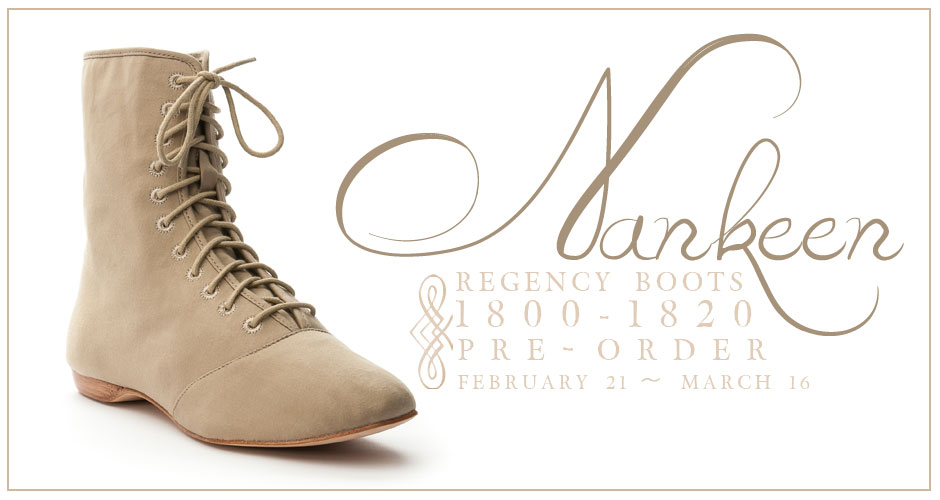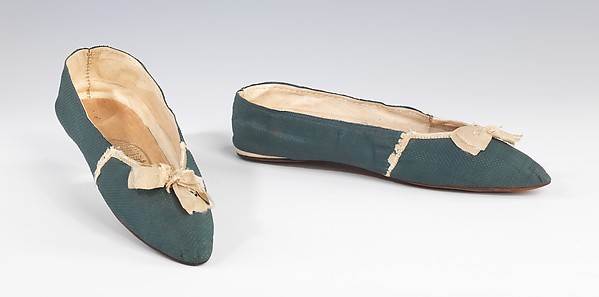The By the Sea challenge was indeed a challenge for me. I have no immediate use for any period swimwear, alas, and those projects aren't quick ones, either. Additionally, I'm over 300 miles from the nearest sea; and there are no natural lakes in my entire state! (Plenty of reservoirs for water, but nothing natural. Well,
except for one,
and it's on the border with Louisiana.) In addition, the next challenge, Flora and Fauna, I planned a more ambitious project. So like the collar for Accessorize, this challenge entrant is also relatively simple: a makeover of an 1860s hat veil.
Several years ago, I ordered a yard of English cotton bobbinette (fine hexagonal mesh) to
make a couple of veils for my mother and I. In Texas the sun's glare is
unrelenting, and lasts about 8 months of the year, so it was a good
opportunity for my first try at a veil. I ordered one yard, and cut
into half-yard lengths for two veils: 17" deep and about 40" wide.
The
theory worked very well: Sun shade! Less squinting! But the length tended to grab onto the shoulders of
my dress. I finished my mother's with ribbon, which both looked pretty and weighted down the hem. So when pondering suitable accessories for a By the Sea challenge, I decided to remake my veil. That meant doing some more serious research on them.
 |
| This is what happens when you bundle up a too-long veil to get it out of the way. Bad veil day! |
Research
Mid-Victorian veils are hard to research; they are one of those things that everyone knew how and when to use, so they are rarely discussed in fashion magazines or shown in fashion plates. However, I know they were typical for use when riding or traveling, to protect the face from sun, wind, dust and cinders, as well as for privacy or anonymity. In many ways, they were to the mid-Victorians what sunglasses are to us today. In color, black and white were the most common, with occasional mentions of blue, green, and brown. Looking through a dark-colored mesh is very similar to using sunglasses.
Another use for veils was for seaside wear, which is why I chose a veil for the By the Sea challenge. A good number of summertime fashion plates in the 1850s and after show figures by the sea or lake, in brightly-colored and white ultra-fashionable outfits. These are the "resort" fashions of 150 years ago. Like sunglasses, a veil is ideal for these situations, which are are usually bright and breezy.
In museums, I mostly found bonnet veils. Veils from the 1830s and 1840s are long and nearly square, and often made with big lace patterns. 50s and 60s bonnet veils are smaller, usually wide half-ovals, or occasionally
distorted diamond shapes; the straight edge is pinned around the bonnet brim, so the curved edge falls more or less evenly. These veils are machine-made of net, embroidered with wide lace patterns, borders, and "spots" and/or sprigs. Rectangular veils continued to be worn on bonnets as well, but the round shape was very popular and tended to survive. It's hard to re-purpose something like this:
Hats, defined as headwear with a brim all around, first re-appeared in fashion magazines in the 1840s, but remained very much a fringe headwear style until the mid-1860s. Throughout the 1850s they tended to have large brims and be worn only in the "garden," or perhaps by the seaside. Although still vastly outnumbered by bonnets, hats with smaller brims appear more commonly in photographs by the early 1860s. They show up in fashion plates in all seasons and settings. A handful of written fashion notes talk about both gauze and lace veils.
But I needed specific information on hat veils, not veils in general. What does a hat veil look like? Is it different from a bonnet veil? Here are most of the examples I've found online in the last month or so.
Real Women
*
Large veil draped on hat; visible only because of wide two-color border. This may be a very big round or half-circle veil pinned only to the front of the hat.
*
Sheer veil, turned back over the hat. Looks to be unpatterned, with no visible lace or border, but the definition isn't good. It's not very long.
*
Long sheer veil with woven ribbon borders. Looks rectangular, of a crisp fabric, gathered to the front of the hat and laid over the trim.
*
Sheer, light-colored, all around the hat. May be either white or blue, because blue photographs light or white with period techniques. Appears to be about chin length; no pattern visible, but the quality of the scan is very low.
*
Lace/net veil, at least halfway around the hat. About chin length, and attached at the base of the crown.
*
Actual wartime photo, taken in camp. Looks dark, soft, and plain. The length is obscured, but it's hanging as if it does have some length; probably more than chin-length.
*
All-over lace veil, shorter than the chin, all around the hat. Fixed to the hat over the front trim. Source from Germany.
*
Lower right-hand corner: Long, sheer, with wide ribbon/woven border.
*
Long spotted veil with lace border. Probably worn over the front decoration.
*
Long sheer veil, light-colored, with deep hem. Sheer, unpatterned, slightly shiny material.
Fashion Plates
*
1859, April. For riding. Green, plain woven, long.
*
1862, August. Black lace, just short of the chin; all around.
*
1863, January. Long and white; plain woven.
*
1863, July. Black lace, about nose length. All around.
*
1863, September. For riding. Brown, plain woven, long.
*
1863, October. For traveling. Chin length, spotted veil with edging, semi-circle attached to front half of brim, possibly gathered at outside edge.
*
1864, June. Chin length, spotted veil with edging (lace or beads), all around.
*
1864, June. Long and rectangular, spotted with gold edging. Only in front.
*
1864, September. Black spotted net with what looks like beaded fringe. Short and shaped; front and sides only.
*
1865, July. Long and white; spotted.
*
1865, August. For the seaside. Long and white, plain woven.
*
1865, August. Long and white; plain woven. Attached at the front.
A borderline "veil" that appeared in the 1850s (I didn't go further back than 1857) is a fringe of lace, usually black, running all around the brim of the hat. It is usually about 2" long, and I would consider it more a hat trim instead of a separate veil. It does not look easily removable as with regular veils. Most of the plates showing it are from the mid/late 1850s, but I still have two from 1862 and one from 1864. Nonetheless, I haven't found any actual photographs showing this type of veil or trim.
This isn't a large sample for research, so I'm leery of drawing any hard conclusions. Still, these
seem to be the general types of hat veils:
* Specialty: Riding (long and sheer, probably plain woven) or traveling (only one picture, but otherwise widely recommended in text, without much elaboration).
* All-over lace: Short to medium length, no longer than the chin.
* Spotted and/or edged: Medium length to long. Probably from the same net that lace is worked on.
* Plain: Long and square. Plain short hem, a deep hem, or with woven/applied ribbons at hem. Probably the ones called "gauze" in fashion magazines.
 |
| Original bonnet veil, collection of Pam Robles. Source |
Verdict: I didn't find evidence of a long, plain net veil. I found various medium-length and short net veils, and one long one, but they were all "spotted" with woven dots, sprigs, or rings, and edged with a woven-in or embroidered pattern, or with beaded or gilt fringe (from fashion magazines).
Obviously I don't have a machine for creating specially-made 1860s hat veils. :) So the next best solution was to create my own edging, or apply another one already made, and embroider my own dots. Fun!
The Challenge: HSF #8, By the Sea
Fabric: Black English cotton bobbinette from
tutu.com
Pattern: None. I looked at museum sites and pictures, and draped on my hat.
Year: c. 1860-1864
Notions: Black alençon lace, unknown content, probably synthetic. Lightweight black thread. Narrow black silk ribbon.
How historically accurate is it? 0% in one way of looking at it, because it's a hand-made approximation of something that was not made by hand. But overall, maybe 75%, losing major points because of the lace. It also needs a lot more spots!
Hours to complete: 6.
First worn: Just for some silly pictures, and briefly on the back porch to see how it behaves in a strong breeze. (Just fine!) I hope to take some real pictures once the Flora & Fauna challenge is done, however.
Total cost: $7
for the lace, of which I used about $1/worth, and about $2.50 for the thread. This was a remake,
though, and originally the bobbinette cost over $30/yd; now it's $40. I
could get four veils this size out of a yard. So call it $12 for materials. If I started over, the cost for one would be close to $50. I could make 4 out of that amount, however.
Construction
I pinned up the veil on my hat to an approximate chin length, and double-checked to make sure it didn't feel silly. Well, super silly.

The pattern of spots took a little thinking. Most originals have a fairly tight pattern, but it would take a long time to embroider that much. Since I
really want to get the Flora and Fauna challenge done on time, I just couldn't justify spending a lot of time on the veil. So I settled for a very wide apart pattern of plain dots, in a diamond pattern about 3" apart. This pattern I can fill in at a future time, at 1.5", 1", or even .5" intervals. That would be very pretty.

Bobbinette is not nearly as slithery as some sheer fabrics, but it does stretch. Furthermore, it shrugs off chalk markings like nobody's business. The only way I could mark the spots was to put in pins and work directly on my cutting table.

The dots weren't very visible on the grid, but they show up better with white behind them. I kept them small, because I plan to add a lot more.

Eventually my back and neck sent urgent warnings, so I rearranged my work station. No more bending over! The dots were tedious, especially since I did have to keep within a pattern of the mesh, but they still went very fast individually. When finished, I attached the lace, overlapping the net just slightly. It was unexpectedly tricky to attach the lace, because the net stretches and the lace doesn't.
I left the original sewn casing and ribbon. In the future I might tat, crochet, or net a fine row of beading to run the ribbon through, similar to original veils.
In these pictures I carefully pinned the veil to the edge of the brim, but I don't think I'll bother with that when I wear it. It's surprisingly difficult to do, and doesn't seem to be as common a way to attach the veil to a hat.
I like the effect when it's pulled back over the hat. A kind of graceful disorder. ;)
In this one, I tried putting it on just the front/sides of the brim. In some ways it doesn't look different, and in others it looks silly. I think this method of attachment is best for one of the long veils.


















































